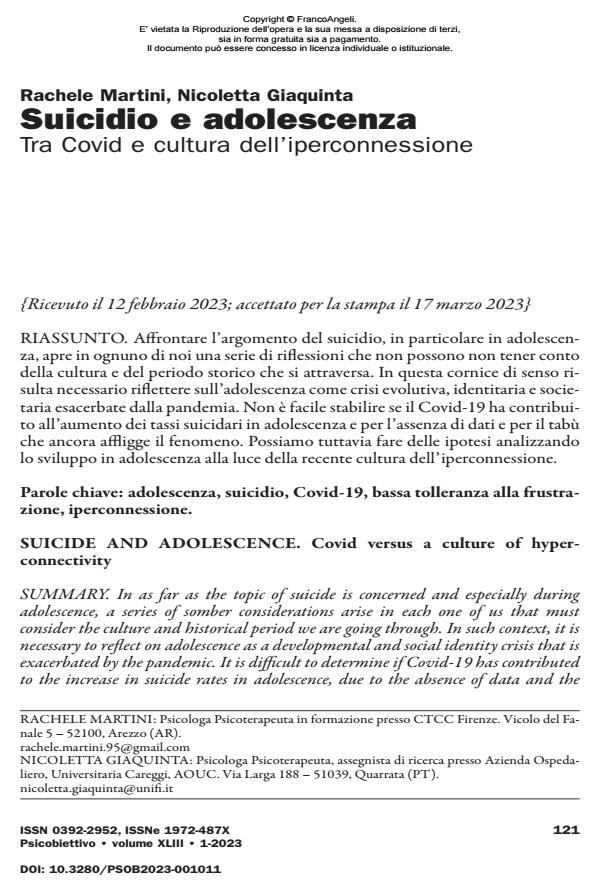Suicidio e adolescenza. Tra Covid e cultura dell’iperconnessione
Titolo Rivista PSICOBIETTIVO
Autori/Curatori Rachele Martini, Nicoletta Giaquinta
Anno di pubblicazione 2023 Fascicolo 2023/1
Lingua Italiano Numero pagine 14 P. 121-134 Dimensione file 640 KB
DOI 10.3280/PSOB2023-001011
Il DOI è il codice a barre della proprietà intellettuale: per saperne di più
clicca qui
Qui sotto puoi vedere in anteprima la prima pagina di questo articolo.
Se questo articolo ti interessa, lo puoi acquistare (e scaricare in formato pdf) seguendo le facili indicazioni per acquistare il download credit. Acquista Download Credits per scaricare questo Articolo in formato PDF

FrancoAngeli è membro della Publishers International Linking Association, Inc (PILA)associazione indipendente e non profit per facilitare (attraverso i servizi tecnologici implementati da CrossRef.org) l’accesso degli studiosi ai contenuti digitali nelle pubblicazioni professionali e scientifiche
Affrontare l’argomento del suicidio, in particolare in adolescen- za, apre in ognuno di noi una serie di riflessioni che non possono non tener conto della cultura e del periodo storico che si attraversa. In questa cornice di senso ri- sulta necessario riflettere sull’adolescenza come crisi evolutiva, identitaria e societaria esacerbate dalla pandemia. Non è facile stabilire se il Covid-19 ha contribui- to all’aumento dei tassi suicidari in adolescenza e per l’assenza di dati e per il tabù che ancora affligge il fenomeno. Possiamo tuttavia fare delle ipotesi analizzando lo sviluppo in adolescenza alla luce della recente cultura dell’iperconnessione.
Parole chiave:adolescenza, suicidio, Covid-19, bassa tolleranza alla frustrazione, iperconnessione.
Rachele Martini, Nicoletta Giaquinta, Suicidio e adolescenza. Tra Covid e cultura dell’iperconnessione in "PSICOBIETTIVO" 1/2023, pp 121-134, DOI: 10.3280/PSOB2023-001011